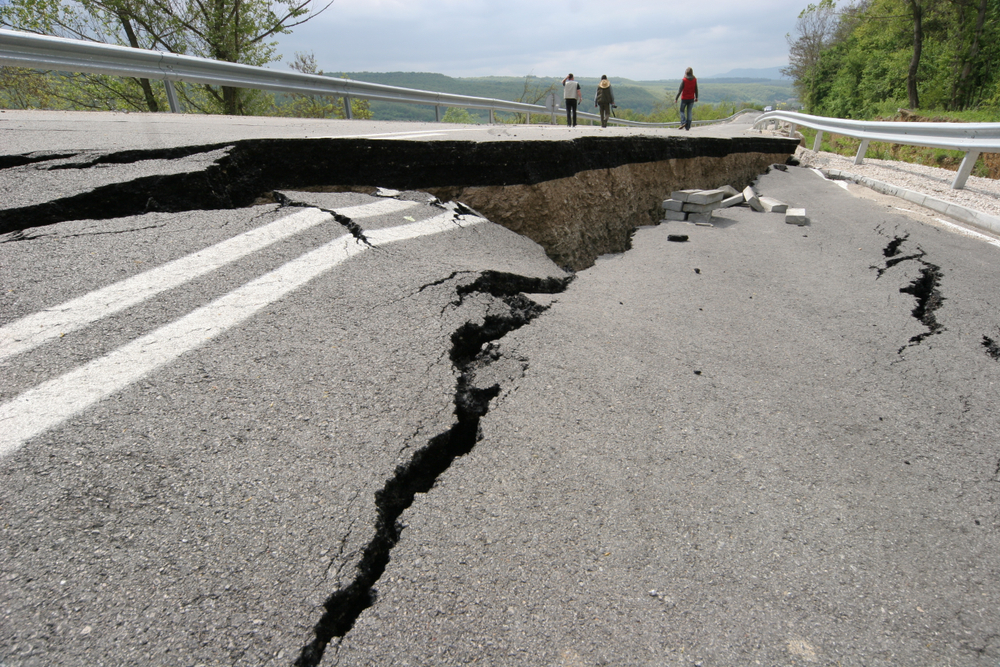
Plastics in motion
Prevent rather than cure
Man is quite powerless when nature gets angry, such as during an earthquake. Although the phenomenon’s mechanism is understood and we know how to monitor at risk areas, we cannot precisely predict when an earthquake will occur, let alone prevent it. An earthquake is a more or less violent tremor that occurs when a geological fault ruptures. When it breaks, the fault emits a shock wave that travels to the surface. The famous San Andreas Fault in California is peppered with seismographs. We know that energy has been accumulating there for more than a century and that one day it will be released with the equivalent power of several tens of thousands of Hiroshima-type atomic bombs. Earthquakes can be continental, but the vast majority occur along oceanic faults. Depending on their power and distance from the continent, they can cause devastating tsunamis. The best that humans can do is to anticipate the material and human damage, and evacuate the population as soon as possible before the disaster occurs.

Although the phenomenon is understood, it is still impossible to accurately predict when an earthquake will occur. |
Earthquakes, polymers have the shakes
During an earthquake, buildings can be shaken violently. Depending on the intensity and duration of the shaking, non-seismically sound structures can suffer severe damage or even collapse.

The foundations of large earthquake-proof buildings are very often laid on a layer of elastomer capable of damping vibrations in the event of an earthquake. |
The countermeasure for this is to make them elastic in order to dampen vibrations and avoid reverberation. Buildings such as office towers, for example, are usually supported on concrete piles with a thick layer of elastomer on the contact surface with the building. This elastic polymer is able to support heavy loads without breaking. In the event of an earthquake, the building, whether it is a structure such as a bridge or a building, shakes but does not collapse. Another solution, reserved for individual houses, involves building ultralight structures. In Japan, for example, a country particularly vulnerable to earthquakes, there are entire villages of "dome houses". |
|
These round houses are designed to withstand shocks. They weigh only 80 kg and comprise several parts made of expanded polystyrene, a flexible polymer able to absorb shockwaves and thus virtually eliminate the risk of collapse. Inexpensive and, above all, modular, they have met with some success in Japan. |

Dome houses are Japanese houses made entirely from different polymers that are able to withstand earthquakes and hurricanes. |
In addition to their earthquake-resistant properties, they have an aerodynamic shape that gives them an excellent grip on the ground to protect them from typhoons, which are also common in the region. In addition, like almost all plastics, polystyrene is resistant to mould, rust and termites.
100% plastic emergency shelters
Plastic houses are nothing new, but until now they have only been used for emergency housing. A few years ago, the Ikea Foundation, in partnership with the United Nations High Commissioner for Refugees (UNHCR), designed and produced more than 30,000 shelters for people who are refugees from war or victims of natural disasters. Delivered in kit form, the shelter can be assembled in just 4 hours. The "house" is built around a metal structure, like the one found in a classic ridge tent, into which plastic sheets are inserted. The polymer used is shrouded in secrecy, but it is probably a fairly common plastic that combines lightness and strength. Measuring about 20 square metres, these houses are equipped with solar panels to produce light. They have a lifespan of 3 years, which is 10 times longer than the usual canvas tents. At the time, this is what attracted UNHCR to the concept. This design provided increased comfort for the refugees and was cheaper in the medium term.
The Dutch company DSM, for its part, worked on a similar emergency shelter concept. However, its concept does not come in kit form. Instead, the company developed a solar-powered grinder/extruder capable of producing plastic sheets for shelters on the spot. The sheets are extruded from recycled plastics such as polyethylene terephthalate (PET), polypropylene (PP) and polyethylene (PE) which have been previously crushed. This solution is particularly interesting in poorer countries where collection and recycling of plastic is e not always (or still not) a priority.
Hurricanes, plastics whisper the solution
Cyclones, hurricanes and storms cause considerable damage, particularly in tropical regions. However, there are a few solutions for preventing damage. Once again, the aim is not to prevent such disasters, but rather to save as many lives as possible and protect buildings to the extent possible.
The secret to creating a house that can withstand strong winds lies above all in its hermeticity. If the wind manages to get in, it will only try to get out, even if that means shattering the roof. The wind must be prevented from entering at all costs, and hermetically-sealed shutters are essential for achieving this. Although steel and wood shutters are available, PVC remains one of the best choices because it is flexible enough to bend without breaking. Its only problem up to now has been its lower impact resistance compared to other materials. A simple coconut can fly at over 200 km/h in a cyclone. Quite the missile! Manufacturers now offer models reinforced with aluminium foil fitted between the blades. There are also hurricane-proof windows which are actually laminated glass. A sheet of PVB (polyvinyl butyral) is glued between two layers of glass. The PVB is a perfectly transparent and therefore invisible polymer that makes the glass virtually unbreakable on impact.

Polyvinyl butyral is an excellent polymer which enables windows to withstand the most violent of hurricanes. |





